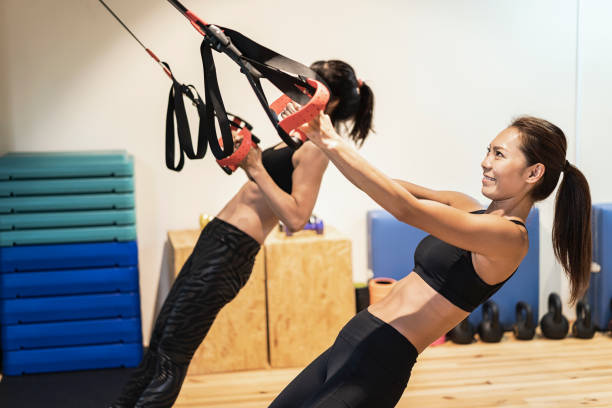
Introduction to the Best Exercises for a Stronger and Wider Back
Do you want a stronger and wider back? If so, you should try some special exercises called vertical pull exercises. These exercises, like pull-ups and lat pull-downs, help make your back muscles bigger and more defined.
Why Vertical Pull Exercises Help Your Back Get Bigger and Stronger
Vertical pull exercises are important because they work on the muscles that help you pull things towards you or lift yourself. These best vertical pulling exercises help make your back stronger and broader.
Be Patient and Keep Trying
Remember, it takes time and practice to make your back muscles grow. Keep doing these exercises and eat healthy foods, and you’ll see your back get stronger and wider over time.
Why Both Types of Pull Exercises Are Important
It’s important to do both vertical pull exercises and another kind called horizontal pull exercises at home. This is because they work different muscles in your back and help make your whole back solid and balanced.
Benefits of Doing Both Kinds of Exercises
When you do vertical and horizontal pull exercises, you work on all the muscles in your back. This helps your back get stronger and wider in different ways.
Balancing Your Exercises
To have a good workout, you should do both effective vertical pull exercise and horizontal pull exercises. For example, you can do pull-ups (vertical pull) and rows (horizontal pull) in the same workout. This helps make your back muscles strong and balanced.
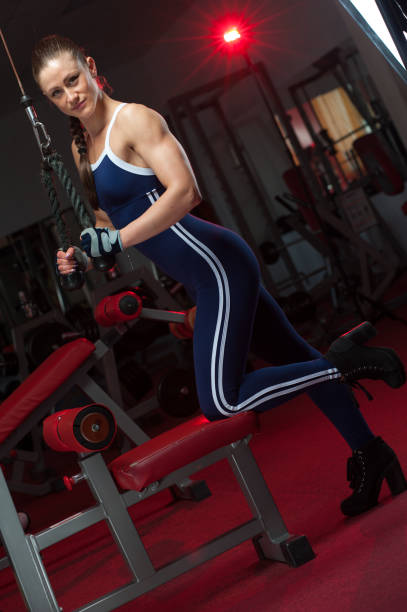
Learning About the Muscles Worked by Vertical Pull Exercises
It’s important to know which muscles you’re working when you do these exercises. Vertical pull exercises help your upper back muscles get stronger.
The Main Muscles in Your Back
Your back has big muscles called the latissimus dorsi, rhomboids, trapezius, and erector spinae. The latissimus dorsi is the biggest muscle and helps you pull your your arms straight down and move your shoulders. The rhomboids and trapezius help pull your shoulders back, and the erector spinae help keep your spine straight.
Which Muscles Do Vertical Pull Exercises Work On?
Vertical pull exercises like pull-ups and chin-ups work on your latissimus dorsi muscles and a little bit on your trapezius and rhomboid muscles. These exercises help make your upper back wider and stronger, giving you an excellent “V” shape.
Which is Better for Your Back: Vertical Pull or Horizontal Pull Exercises?
Both vertical and horizontal pull exercises are good for making your back stronger and wider. But it’s important to know the good and not-so-good things about each kind to choose the best exercises for you.
Good and Not-So-Good Things About Vertical Pull Exercises
Vertical pull exercises like pull-ups make your upper back muscles strong. But they can be hard for beginners or people who still need strong arms. You should use special bands to help you do these exercises if they’re too hard.
Good and Not-So-Good Things About Horizontal Pull Exercises
Horizontal and vertical pull movements and exercises like rows are good for making the middle part of your back wider. They’re also easier for beginners and people who still need strong arms. But some of these exercises, like inverted rows, need extra equipment like pull-up bars or straps.
Main Muscles Worked by Vertical Pull Exercises
To make your back workouts work well, you need to know which muscles are most important in performing vertical pull exercises well.
The Big Muscle for a Wider Back: Latissimus Dorsi
The latissimus dorsi muscle is the most important muscle for vertical pull exercises. To work on this muscle even more, try to vertical pull movement down and back with your shoulders instead of just using your arms to pull yourself up. This will help make your back wider.
Other Muscles That Help in Vertical Pull Exercises
Besides the latissimus dorsi, vertical pull exercises like pull-ups and chin-ups also work on your biceps, trapezius, and rhomboid muscles. These muscles help you do the exercises and make your back strong too.
Vertical Pulling Exercises at Home: Detailed Descriptions and Benefits
Bodyweight exercises for vertical pulling strength
Bodyweight exercises for vertical pulling strength are perfect for beginners and can be done at home without additional equipment. The most common and effective exercises for vertical pulling movements include:
Chin-Ups: Start by grabbing a pull-up bar with your palms facing you. Pull yourself up until your chin is above the bar. This exercise primarily targets your biceps, lats and upper back muscles. It’s essential to avoid swinging and lower yourself slowly down to avoid injury.
Pull-Ups: Like chin-ups, pull-ups target your lats, rhomboids, and lower traps. Grab the pull-up bar with your palms facing outwards, and lift yourself until your chin clears the bar. Lower yourself down slowly and repeat.
Equipment-based exercises for added resistance and variation
Equipment-based exercises can add resistance and variation to your vertical pulling exercises. Here are some great equipment-based horizontal pulling exercises that you can integrate into your workout:
Cable Rows: Attach a cable machine a V-bar attachment to the cable pulley. Grab the handle with both hands and pull the handle towards your waistline. Keep your elbows tucked in and fully extend your arms forward. This exercise targets your middle back, rear deltoids and upper traps.
Assisted Pull-Ups: Use a pull-up assistance band to support your body weight while performing pull-ups. This exercise is excellent for beginners and can help you build strength and form before attempting unassisted pull-ups.
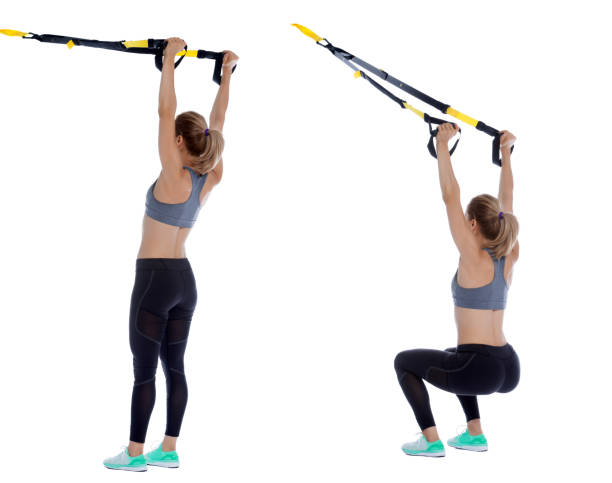
Scaption: Incorporating Scap Pull-Up and Reverse Shrugs into Your Back Workout
Scap Pull-Up: Technique, benefits, and Variations
Scap pull-ups are excellent for improving your scapular stability and control. This exercise targets the muscles surrounding your shoulder blades, back and upper arms to help build strength before progressing to full pull-ups. Here’s how to perform a scap pull-up:
Hang from the pull-up bar, shoulders engaged but with straight arms and without retracting your shoulder blades. From here, retract the shoulder blades down and towards your spine and allow your elbows to move horizontal pulling exercise back towards you. Lower back down and repeat.
Reverse Shrugs: Technique, benefits, and Variations
Another great exercise to improve your scapular control is reverse shrugs. This exercise focuses on the traps, rhomboids and upper back muscles. Here’s how to do a reverse trap shrug:
Start by holding a barbell with an overhand grip and stand with your feet shoulder-width apart. With straight arms, lift the barbell to shoulder level and retract your shoulder blades down and toward your spine, lifting your arms overhead your shoulders. Lower the barbell down slowly and repeat.
Boost Your Back Strength with Band-Assisted Pull-Ups and Neutral Grip Pull-Ups
Band-Assisted Pull-Ups: How to perform and progress
Band-assisted pull-ups are excellent for beginners and can help build strength before progressing to unassisted pull-ups. Here’s how to perform a band-assisted pull-up:
Loop a resistance band around the pull-up bar and underneath your knees. Grab the two banded pull ups up bar with an underhand grip and pull yourself up until your chin clears the bar. Lower yourself down and repeat.
To progress, use a lighter resistance band or reduce the force of the resistance band.
Neutral Grip Pull-Ups: Benefits and Technique
Neutral grip pull-ups are a great alternative to traditional pull-ups. This exercise targets the same muscles as traditional pull-ups, but with a neutral grip, it places less stress on your wrists and shoulders. Here’s how to perform a neutral grip pull-up:
Grab the parallel handles on a pull-up bar, with palms facing each other. Pull yourself up until your chin clears the bar. Lower yourself down slowly and repeat.
Lat Pulldowns: A Key Exercise for Building a Wider and Stronger Back
Proper lat pulldown technique and common mistakes
Lat pulldowns are excellent for targeting your lats, middle back and upper traps. Here’s how to perform a proper lat pulldown:
Attach a wide grip attachment to the cable pulley. Sit on the seat and grip the handles slightly wider than shoulder-width. Pull the bar down towards your chest, keeping your elbows towards your sides. Slowly let go of the bar and allow it to raise back up above your head. Common mistakes include pulling the bar behind your head, using momentum to lift the weight and improperly engaging your lats.
Lat pulldown variations for a well-rounded back workout
Lat pulldown variations include wide-grip lat pulldowns, underhand grip pulldowns, and close-grip pulldowns. Changing the grip width and variation can help you target different areas of your back, providing a more well-rounded workout.
No Equipment? No Problem! Vertical Pull Exercises You Can Do Without Equipment
Bodyweight vertical pull exercises for beginners
Here are some great bodyweight exercises that require no equipment and are great for beginners:
Inverted Rows: Grab onto a sturdy bar, maintain a plank position, and pull yourself up. This exercise targets your upper back muscles and is an excellent alternative to horizontal rows.
Bodyweight Rows:
- Lie under a sturdy bar.
- Grab onto the bar with palms facing your feet.
- Pull your chest towards the bar.
This exercise targets your upper back muscles and is a great alternative to horizontal rows.
Advanced no-equipment vertical pull exercises
Advanced no-equipment vertical pull exercises include:
Towel Pull-Ups: Hang two towels over a pull-up bar and grab onto them with a neutral grip. Perform pull-ups as usual while using the towels for added grip and instability.
Pike Pull-Ups: Starting in a downward dog yoga pose, move your head towards the floor while lifting your legs and keeping your elbows close to your sides. This advanced exercise targets your upper back, lats and core muscles. Rewrite to Explain for a 2nd grader.
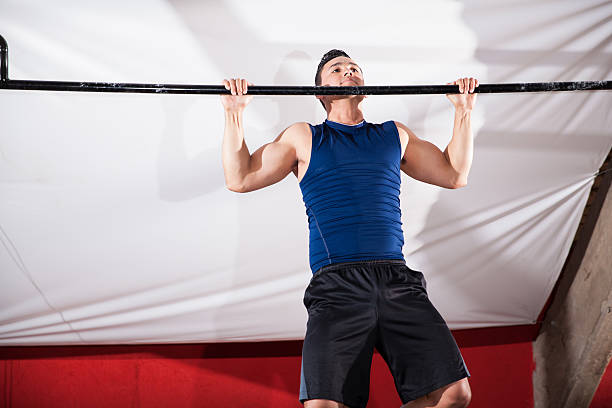
Barbell Rows and Chin-Ups: Essential Vertical Pull Exercises for a Powerful Back
Barbell Rows and Chin-Ups are classic exercises for building upper body strength, and they are essential vertical pull exercises that should be included in every back workout routine.
Barbell Rows: Technique, Benefits, and Variations
Barbell Rows are one of the best exercises for building upper back muscles. The technique is simple: hold a barbell with an overhand grip, stand with your feet shoulder-width apart, and hinge at the hips while keeping a straight back. Pull the bar towards your upper abs, then lower it slowly.
Barbell Rows have a range of benefits, including targeting the lats, rhomboids, traps, and rear delts. They also help you develop grip strength and will challenge your core muscles.
There are several variations of Barbell Rows, including underhand grip rows, wide grip rows, and one-armed rows. Try different variations to switch up your workout routine and challenge your back muscles.
Chin-Ups: Technique, Benefits, and Progressions
Chin-ups are another essential exercise for developing upper body strength, and they help you build a wider back and improve your grip strength. The technique is straightforward: grip a pull-up bar with an underhand grip, hang with your arms fully extended, and then pull yourself up until your chin is above the bar. Lower yourself back down slowly.
Chin-ups have a range of benefits, including strengthening the lats, biceps, and rear delts. They also provide an excellent challenge for your grip and core muscles.
If you’re new to chin-ups, start with negative chin-ups, where you jump up to the top of the chin-up position and slowly lower yourself down. Another way to progress is by doing assisted chin-ups with the help of a resistance band. As you get stronger, work towards doing unassisted chin-ups with proper form.
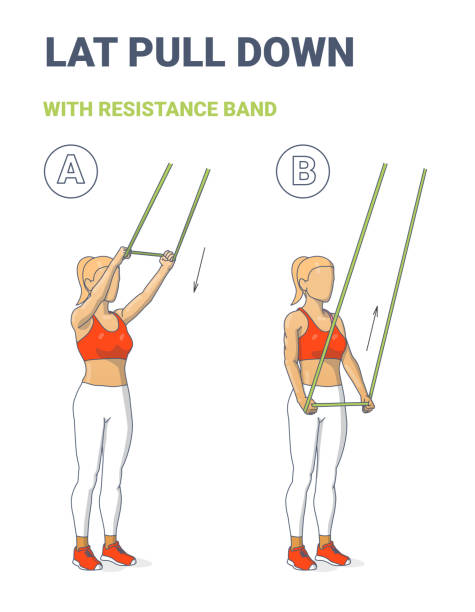
Band Pulldown Exercises to Enhance Your Back Workout
Resistance band exercises are an excellent way to add variety and challenge to your vertical pull workout routine. Bands are inexpensive, portable, and can be used in various ways to target different muscles in your back.
Different Types of Band Pulldown Exercises and Their Benefits
There are several types of band pulldown exercises that you can do to challenge your back muscles. Some of the most effective ones include:
– Face Pulls: These target the rear delts and upper back muscles. Attach the band to a sturdy pole or a power rack at chest level, grip the band handles with both hands, step back until you feel resistance, and pull the band towards your face.
– Seated Rows: These target the mid-back muscles. Attach the band to a pole or a power rack starting position it at knee level, sit down with your feet extended, and pull the band towards your chest while sitting tall.
– Lat Pulldowns: These target the lats and rear delts. Attach the band to a high pole or a power rack, grip the handles, kneel if necessary, and pull the band towards your chest while keeping your back straight.
How to Choose the Right Resistance Band for Your Workout
Choosing the right resistance band is crucial to ensure you are challenging your muscles appropriately. Bands come in different resistance levels, so choose a band that feels challenging but still allows you to perform the exercise with the proper form.
If the band is too easy, you can increase the resistance by using a thicker band or by doubling up the band. On the other hand, if the band is too hard, you can decrease the resistance by using a thinner band.

Pull-Ups: The Ultimate Vertical Pull Exercise for a Strong Back
Pull-ups are one of the best exercises for developing a strong back and are a great way to improve your overall upper-body strength and athletic performance.
Mastering the Pull-Up: Technique, Progressions, and Variations
The pull-up technique is similar to that of a chin-up but with an overhand grip. Start with your arms extended, grip the bar with an overhand grip, pull yourself up until your chin is above the bar, and lower yourself slowly.
If you’re new to pull-ups, start with negative pull-ups, where you jump to the top of the pull-up position and slowly lower yourself. Another great way to progress is by doing assisted pull-ups with the help of a resistance band or an assisted pull-up machine.
There are several variations of pull-ups that you can try to switch up your workout routine and challenge your back muscles. Some of the most effective variations include:
-Wide Grip Pull-Ups: These target the lats and help build a wider back.
– Mixed Grip Pull-Ups: These are done with one overhand and one underhand grip. This variation helps you increase your grip strength and challenge your biceps and forearms.
– Commando Pull-Ups: This variation involves gripping the pull-up bar with one hand facing towards you and another facing away. This variation helps you target your forearms and lats.
Overcoming Common Pull-Up Challenges and Plateaus
Pull-ups can be challenging and intimidating, but with practice and patience, anyone can master them. Here are some tips on how to overcome common challenges and plateaus:
– Strengthen your grip: Grip strength is essential for doing pull-ups. Incorporate grip-strengthening exercises into your routine, such as Farmer’s Walks, hanging from a bar, or using a grip-strengthening tool.
– Increase your back strength: If you struggle to pull yourself up, focus on building your back muscles with other exercises such as rows and pulldowns.
– Practice, practice, practice: Like any other skill, the better you will get the more you practice. Incorporate pull-ups into your routine regularly, and aim to increase your reps or sets gradually.
Using Resistance Bands to Improve Your Vertical Pull Exercises
Resistance bands are not just for beginners; even advanced lifters can benefit from incorporating them into their workouts. Bands can help you target specific muscles more effectively, challenge your muscles differently, and help you break through plateaus.
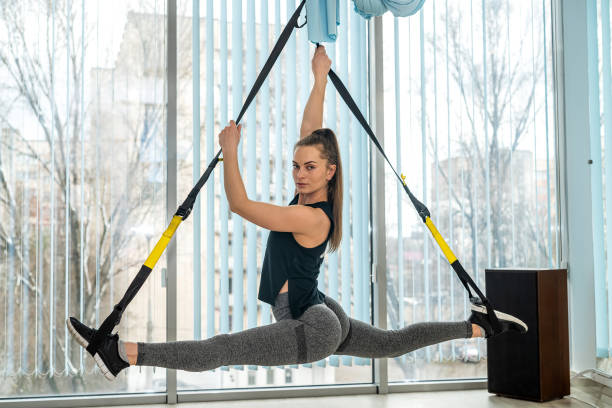
Advantages of Incorporating Resistance Bands in Your Back Workout
Here are some advantages of using resistance bands in your vertical pull workout routine:
– Versatile: Bands can be used in various ways to target specific muscles in the back.
– Portable: Bands are lightweight and can be easily taken on the go.
– Affordable: Bands are a cost-effective alternative to expensive gym equipment.
– Customizable: Bands come in different resistance levels to customize your workout to your fitness level.
.
How to Properly Use Resistance Bands for Vertical Pull Exercises
When using resistance bands for vertical pull exercises, it’s essential to choose the right band for your level of fitness and strength. Start with a band that allows you to complete the vertical pulling exercise with proper form and gradually increase the resistance over time.
Here are some tips on how to use resistance bands for vertical pull exercises:
– Anchor the band securely: Anchor the band to a sturdy and secure object, such as a stable pole or a power rack.
– Maintain proper form: Keep your shoulders down and engage your back muscles throughout the entire body during exercise.
– Challenge yourself: Try using thicker bands or doubling up the bands to increase resistance as you get stronger.
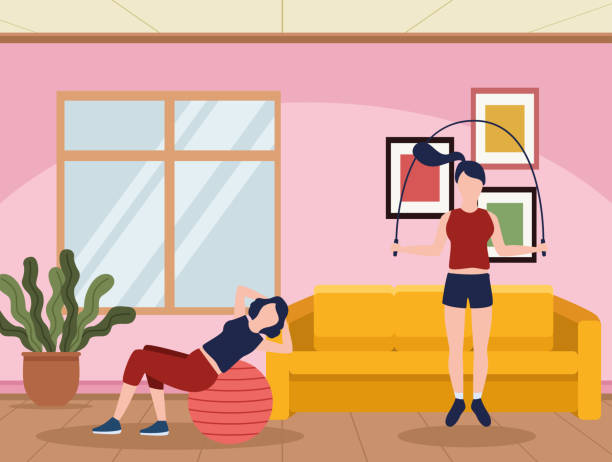
Incorporating unique exercises into your routine can help you challenge your muscles in different ways and promote muscle balance.
Single-Arm Lat Pulldown: Technique, Benefits, and Variations
Single-Arm Lat Pulldown is an excellent exercise for targeting the lats and upper back muscles. Sit down at a lat pulldown machine top, place one hand on the bar, and pull it towards your chest while keeping your back straight.
Variations of this exercise include using different types of handles, such as a V-bar or a straight bar, and changing the angle of the pulley to target different muscles.
Banded Pull-Up and Single-Arm Cable Pulldowns: Technique and Benefits
Banded Pull-Up is a great variation of pull-ups where you use a resistance band to assist with the movement. The banded pull-up helps you build strength and work towards doing unassisted pull-ups.
Single Arm Cable Pulldowns are excellent for targeting the lats and upper back muscles. Stand in front of a pulley machine with one hand on the handle, and do straight arm pulldowns move it towards your side while keeping your back straight.


Leave a Reply